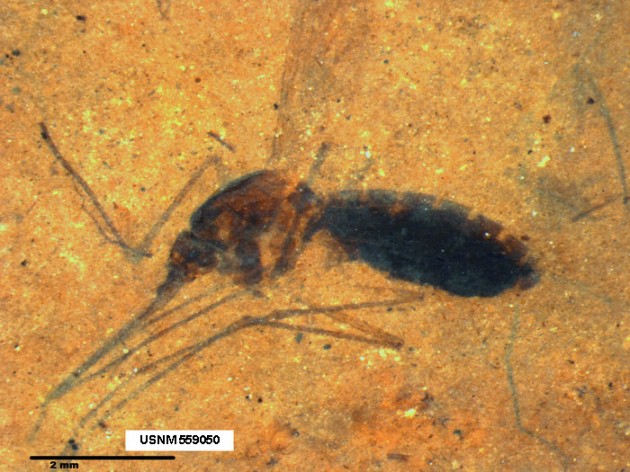Five amazing fossil finds that will make you want to be a fossil hunter
What do you want to be when you grow up? Would you want to explore the world searching for long lost creatures of our past? That’s exactly what many of our paleontologists and expert fossil hunters do at the Smithsonian. Check out these five amazing finds in celebration of National Fossil Day. Could you imagine if you found one of these exciting fossils?
1. A giant prehistoric turtle that could chomp crocodiles!
Paleontologists were astounded when they found a turtle the size of a smart car with a head roughly the size of a regulation NFL football. Named Carbonemys cofrinii, after the Colombian coal mine where it was found, the giant turtle lived 5 million years after the dinosaurs vanished. This was a period when giant varieties of many different reptiles—including Titanoboa cerrejonensis, the largest snake ever discovered lived—in this part of South America. Read more...

2. Details of an ancient shark attack preserved in fossil whale bone.
Three-to-four million years ago during the Pliocene a whale was attacked, most likely by a mega-toothed shark Carcharocles megalodon. Paleontologists found evidence of this animal behavior in a fragment of whale rib dug up in a North Carolina. Three tooth marks on the rib indicate the whale was severely bitten by a large predator, with 6-centimeter (2.4-inch) spacing between the tooth marks. Scientists know the whale survived because “most of the fossil fragment is covered with a type of bone known as woven bone, which forms rapidly in response to localized infection.” Read more…

3. A new species of large, feathered dinosaur that looked like a giant scary chicken.
Sometimes paleontologists find amazing new species not by sifting through dirt, but by digging around in the drawers of museums. That’s what happened with Anzu wyliei, a strange, bird-like creature that has a bony crest on top of a beaky head and a long lizard-like tail. Scientists from the Smithsonian’s National Museum of Natural History, the Carnegie Museum of Natural History and the University of Utah discovered the species in 2014 and named it after a feathered demon from ancient Mesopotamian mythology. Read more...

4. Blood molecules preserved for millions of years in the abdomen of a fossil mosquito.
It sounds like the beginning of Jurassic Park. A mosquito ate its last blood meal 46 million years ago before it was fossilized at the bottom of an ancient pond. Scientists from the Smithsonian’s National Museum of Natural History discovered blood molecules from the mosquito’s last supper very much intact inside the fossil, the first clear evidence that some organic molecules can be preserved in a fossil of this age. What else can we find from these fossilized mosquitoes? Read more...

5. A new fossil whale species that makes us question why narwhals and belugas live only in cold water today.
When scientists from the Smithsonian’s National Museum of Natural History and Howard University found a new species of toothed whale that lived some 3-4 million years ago, it raised some questions. A nearly complete skull of the new species, Bohaskaia monodontoides, was found in 1969 in a mine near Hampton, Va. Only after the researchers looked at the skull in 2010 did they realize not only was it a different species to the narwhals and belugas that live today, but unlike modern whales it lived in temperate and tropical regions. Read more…


